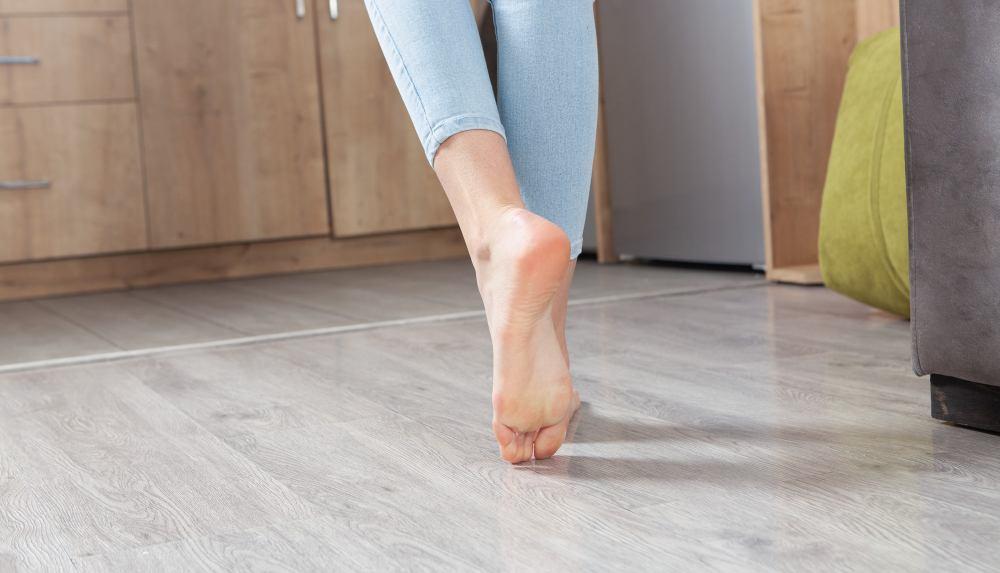Solutions for Dealing with Flat Feet
 Flat feet, a common condition affecting approximately 25% of the population, occurs when the arches of the feet are minimal or non-existent. While many individuals with flat feet experience no discomfort, others may encounter symptoms that impact their daily lives. In this brief article brought to you by Mountain Spring Podiatry, we dive into the world of flat feet, touching on its symptoms and treatment options.
Flat feet, a common condition affecting approximately 25% of the population, occurs when the arches of the feet are minimal or non-existent. While many individuals with flat feet experience no discomfort, others may encounter symptoms that impact their daily lives. In this brief article brought to you by Mountain Spring Podiatry, we dive into the world of flat feet, touching on its symptoms and treatment options.
If you are experiencing chronic or severe foot pain, or if you have foot deformities that concern you, then consider seeing a licensed podiatrist, or foot doctor. The professionals at Mountain Spring Podiatry are happy to schedule an appointment or arrange a walk-in for as soon as possible.
Understand Flat Feet
Flat feet, also known as pes planus, is a condition characterized by the lack of sufficient arches in the feet. The arches, formed by tendons and ligaments, play a crucial role in supporting the body’s weight and absorbing shock during activities like walking or running. When these arches are absent or collapsed, the entire sole of the foot makes contact with the ground.
Symptoms of Flat Feet
Step on a dry area with wet feet and your footprint will give you an idea of whether you have flat feet or a sufficient arch. While some individuals with flat feet remain asymptomatic, others may experience a range of symptoms that can affect their quality of life.
Individuals with flat feet may experience pain and discomfort in the feet, particularly in the arch area. This discomfort can extend to the ankles and even the lower legs. Swelling around the inside of the ankle is another potential symptom of flat feet. This occurs due to the strain placed on the tendons and ligaments in the foot.
Moreover, finding comfortable shoes can be a challenge for individuals with flat feet. They may notice uneven wear on their shoes, particularly on the inner side.
Treatment Options and Solutions for Flat Feet
Fortunately, several solutions can help alleviate the symptoms associated with flat feet. It is essential to consult with a reliable podiatrist to determine the most suitable approach for you. Common approaches include:
- Orthotic Inserts: Custom-made or over-the-counter orthotic inserts can provide additional arch support and improve foot alignment. These inserts are designed to fit comfortably inside shoes
- Physical Therapy: A licensed physical therapist can develop a personalized exercise program to strengthen the muscles and improve the stability of the feet.
- Footwear Modifications: Wearing supportive and properly fitting shoes is crucial for individuals with flat feet. Podiatrists may recommend shoes with arch support and stability features to accommodate the unique needs of flat feet.
- Surgical Intervention: In severe cases where conservative measures are ineffective, surgical options may be considered. Surgical procedures aim to correct the structure of the foot and restore proper arches.
For those experiencing symptoms of flat feet, seeking professional guidance from a licensed podiatrist is wise. Podiatrists specialize in the diagnosis and treatment of foot-related conditions and can provide personalized advice based on an individual’s specific needs.
Consult with a Podiatrist
Individuals experiencing discomfort or pain related to flat feet are encouraged to consult with a licensed podiatrist to receive tailored advice and explore effective treatment options. Residents in the area can call Mountain Spring Podiatry to schedule an appointment or arrange a walk-in for as soon as possible.
